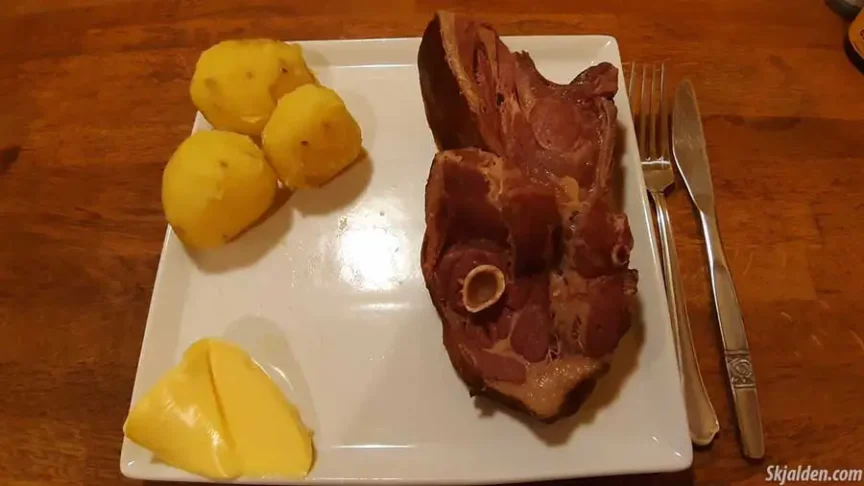If you’re curious about Icelandic cuisine, hangikjot is a great place to start. This dish, traditionally enjoyed around Christmas, is a true representation of Iceland’s culinary heritage. Made from smoked lamb, mutton, or sometimes horse meat, hangikjot is not just food; it’s a piece of Icelandic tradition served on a plate. The meat is usually boiled and can be eaten hot or cold, often accompanied by potatoes in béchamel sauce, green peas, or served in thin slices on various types of bread, like flatkaka or rúgbrauð.
The name “hangikjot” literally means “hung meat,” pointing to the ancient method of smoking food for preservation by hanging it in a smokehouse. This process infuses the meat with a distinctive smoky flavor that’s become synonymous with Icelandic cuisine. Smoking with Icelandic birch or dried sheep dung are traditional methods, each adding its unique taste to the meat.
The Historical Roots of Hangikjot
Hangikjot’s origins can be traced back to the necessity of preserving meat in Iceland’s harsh climate. Smoking meat, a technique used worldwide, was especially crucial in Iceland where the cold winters made food preservation a vital practice. Over the years, this method of smoking meat not only continued but became a celebrated part of Icelandic culinary traditions, especially during the festive season.
Interestingly, hangikjot is often prepared from the hind legs of the sheep, a choice that combines flavor with tradition. Some people prefer the meat with a layer of fat for added taste, while others might choose a leaner cut. Variations like tvíreykt, which means “twice smoked,” have also become popular, offering a stronger flavor reminiscent of the traditional hangikjot that would smoke for months on end.
Despite the changes in preparation methods and the introduction of new flavors, the essence of hangikjot as a celebration of Icelandic culture remains the same. It’s a dish deeply embedded in the country’s festive traditions, enjoyed by families as they come together during the holiday season. A recent survey highlighted that around 90% of Icelanders savor hangikjot at least once during the holidays, underlining its significance in Icelandic festivities.
